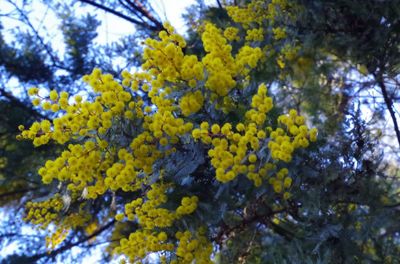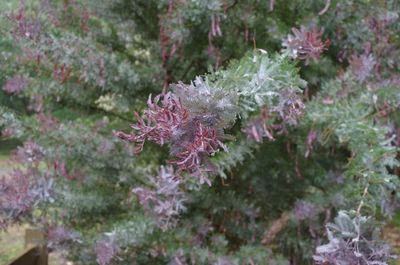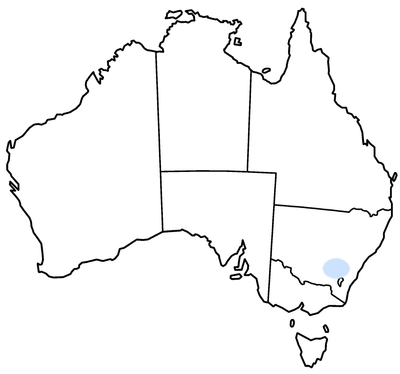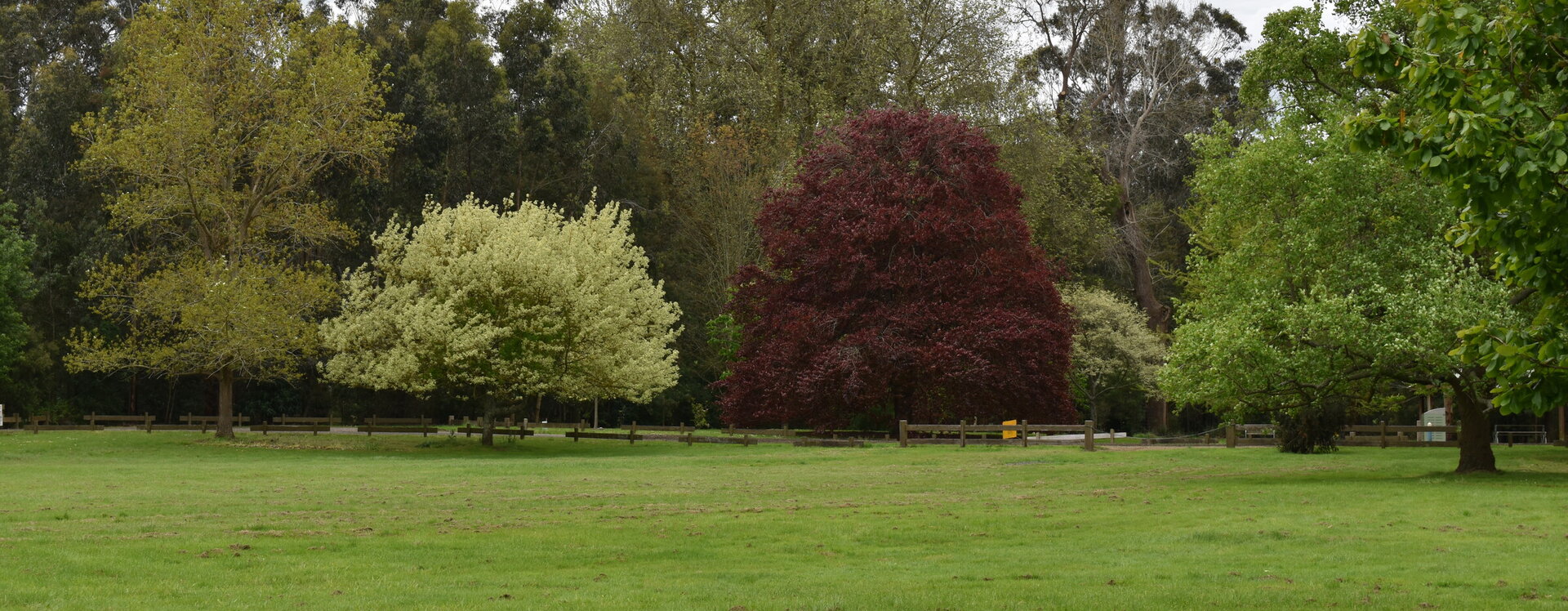



Acacia baileyana ‘Purpurea’
Acacia
Species: Acacia baileyana
Genus: Acacia
Family: Fabaceae
Common name/s: Cootamundra wattle
Provenance: Native, southern inland New South Wales, comprising Temora, Cootamundra, Stockinbingal and Bethungra districts
General description: An upright shrub or small tree with a spreading crown. It usually grows 3-6 m tall, but occasionally reaches up to 10 m in height.
Stems and bark: On older branches it is smooth and either grey or brown in colour. The base of the trunk of mature trees can be up to 25 cm across. Younger branches are sometimes rounded, but more commonly they are angled or somewhat flattened towards their tips. These branches are hairless or can occasionally have some spreading hairs, and often also have a waxy coating. The tips of young foliage purplish or reddish.
Leaves: The leaves are bipinnate and usually have a somewhat greyish-green, or bluish-grey appearance. These leaves (30-65 mm long) are alternately arranged along the stems and almost stalkless. They consist of a swollen base 2-5 mm long and a main stalk bearing 2 to 4 (occasionally 5 or 6) pairs of branchlets. The lowest pair of branchlets are usually smaller than the others and angled backwards. The main stalk, which is usually only 1-4 cm long, has a small gland at the junction of the uppermost one to three pairs of branchlets. Each branchlet is 1 - 3 cm long and bears numerous (8-24) pairs of relatively small oblong or elongated leaflets. These leaflets (3-9 mm long and 0.7-1.6 mm wide) are hairless and usually have pointed tips.
Flowers: are fluffy in appearance due to the presence of numerous stamens. These flowers have five relatively inconspicuous petals and sepals and are densely arranged into small globular clusters (6 - 8 mm across) containing 11-25 flowers. The globular flower clusters are borne on short slender stalks 4-7 mm long and are alternately arranged on a branch emanating from the forks of the leaves, or occasionally at the tip of the stem. These much larger elongated compound clusters (5-10 cm or more long), containing 8-30 of the small globular flower clusters, may or may not be branched and are significantly longer than the leaves. Flowering generally occurs during late winter and spring, but may occasionally last into early summer in cooler climates.
Seeds/fruit: an elongated pod (30 - 120 mm long and 8 - 15 mm wide) that is borne on a short stalk. These pods are flattened, hairless and either straight or slightly curved. They are bluish-green in colour and covered in a whitish powdery substance when young but turn brown or reddish-brown as they mature. When fully mature they split open to release up to 12 dark brown to black seeds. Fruit are normally present during late spring. The seeds (4 - 7 mm long and 2 - 4 mm wide) are hard-coated and have a small aril attached to them.
Location: Group of three A7
1.00: Latitude: -38.4014030000000 Longitude: 146.053855000000
1.01: Latitude: -38.4013920000000 Longitude: 146.053877000000
1.02: Latitude: -38.4013960000000 Longitude: 146.053883000000
Planted: 2007

